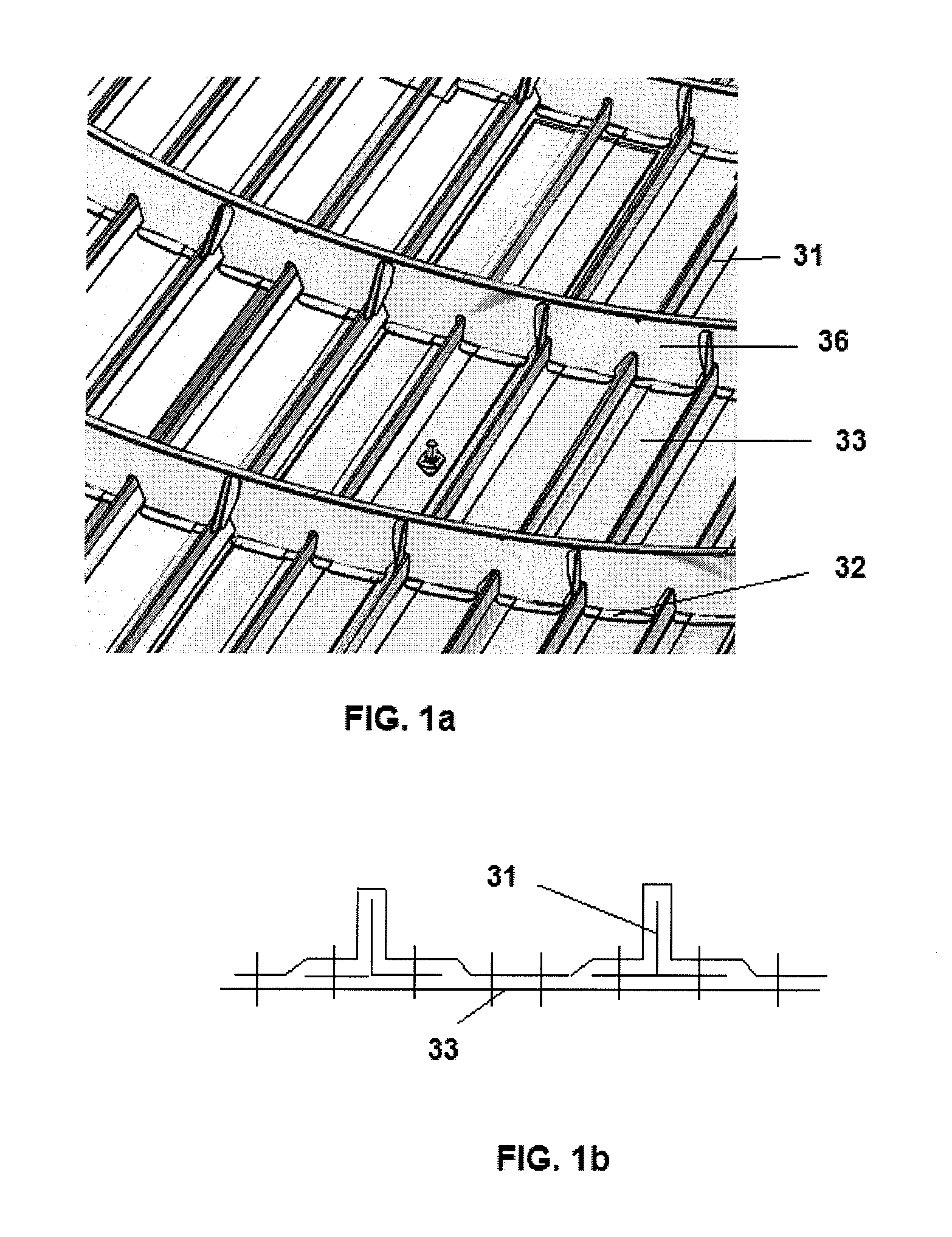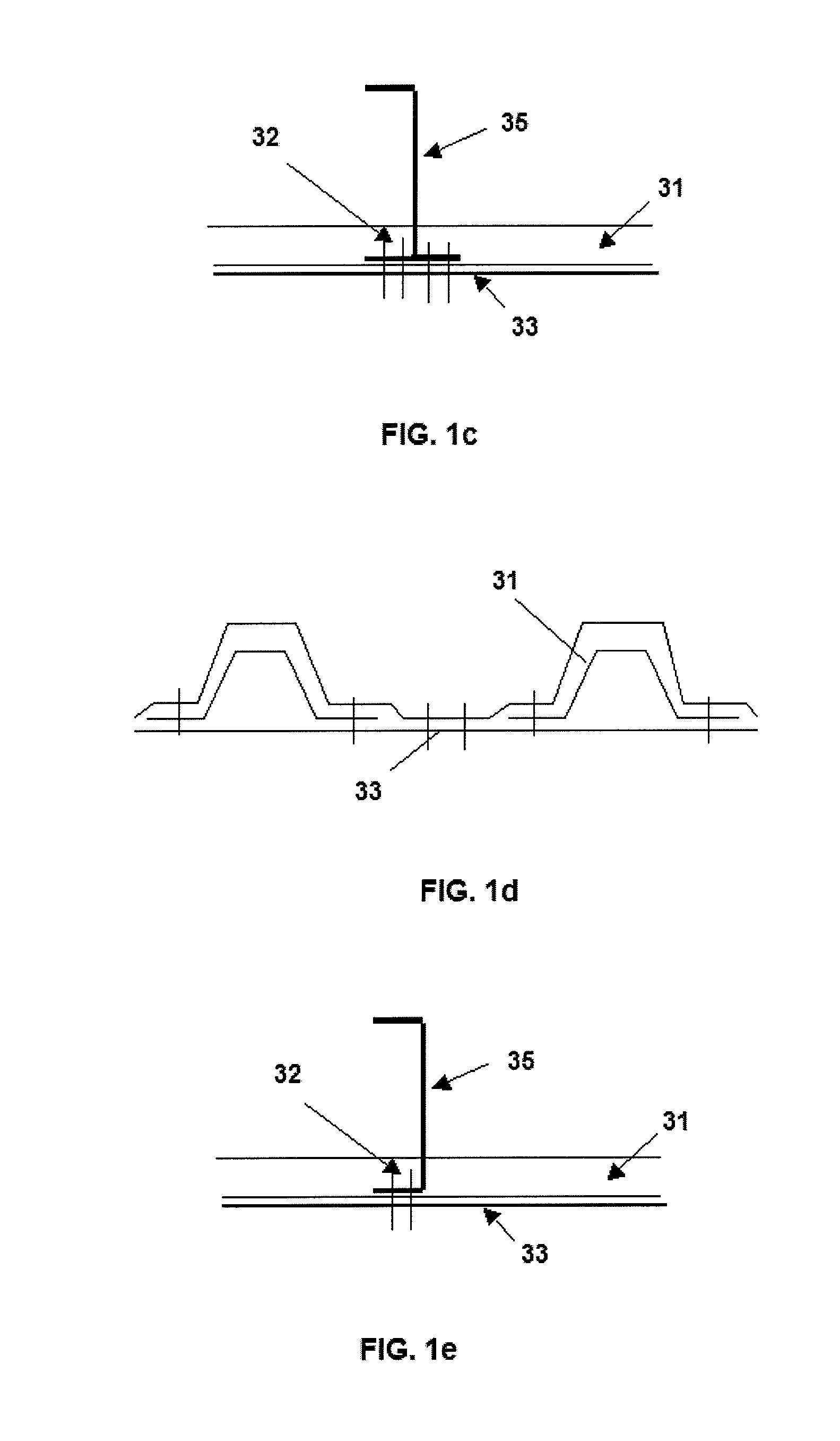Integrated aircraft structure in composite material
- Summary
- Abstract
- Description
- Claims
- Application Information
AI Technical Summary
Benefits of technology
Problems solved by technology
Method used
Image
Examples
Embodiment Construction
[0042]Aircraft fuselage structures that employ known complete frames comprise frames 36, which in their turn comprise a web 35, frame feet 32, stringers 31 and a skin 33, said feet 32 being riveted to the skin 33. The details of this configuration can be seen in FIGS. 1a-1e.
[0043]On the other hand, aircraft fuselage structures that employ known floating frames comprise, for the frame, two different pieces, a floating frame 46 as such and a foot 42. Moreover, they include a skin 43 to which the feet 42 are joined by rivets, and stringers 41, to which the aforesaid feet 42 are also joined. This structure can be seen in FIGS. 2a-d.
[0044]Thus, the present invention proposes a highly integrated aircraft fuselage structure that comprises a basic skin 3, longitudinal reinforcements or stringers 1 and U-shaped elements 15, in such a way that the integrated structure obtained is more efficient with respect to strength, stiffness and low weight. Moreover, such an integrated configuration me...
PUM
| Property | Measurement | Unit |
|---|---|---|
| Temperature | aaaaa | aaaaa |
| Thickness | aaaaa | aaaaa |
Abstract
Description
Claims
Application Information
 Login to View More
Login to View More - R&D
- Intellectual Property
- Life Sciences
- Materials
- Tech Scout
- Unparalleled Data Quality
- Higher Quality Content
- 60% Fewer Hallucinations
Browse by: Latest US Patents, China's latest patents, Technical Efficacy Thesaurus, Application Domain, Technology Topic, Popular Technical Reports.
© 2025 PatSnap. All rights reserved.Legal|Privacy policy|Modern Slavery Act Transparency Statement|Sitemap|About US| Contact US: help@patsnap.com



